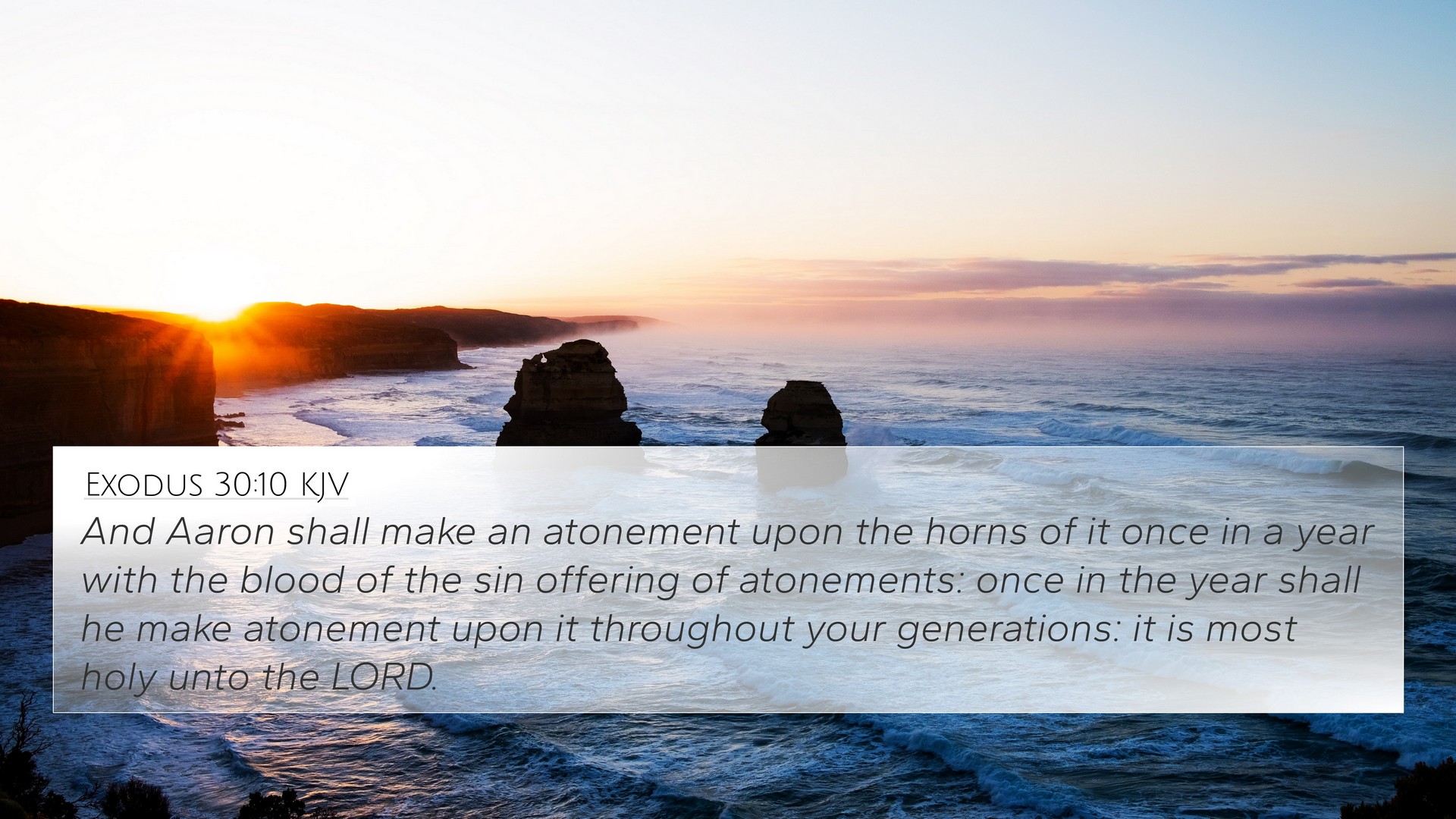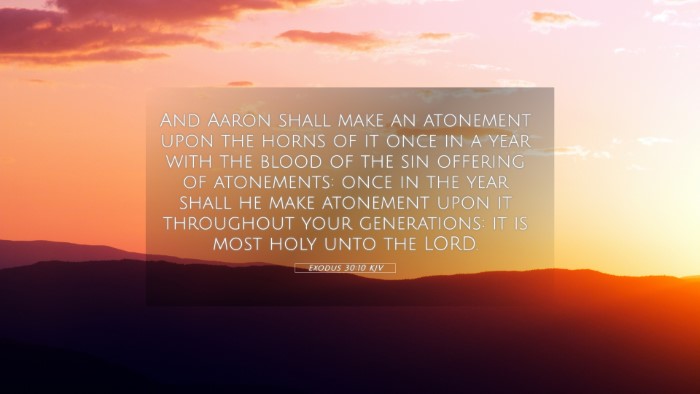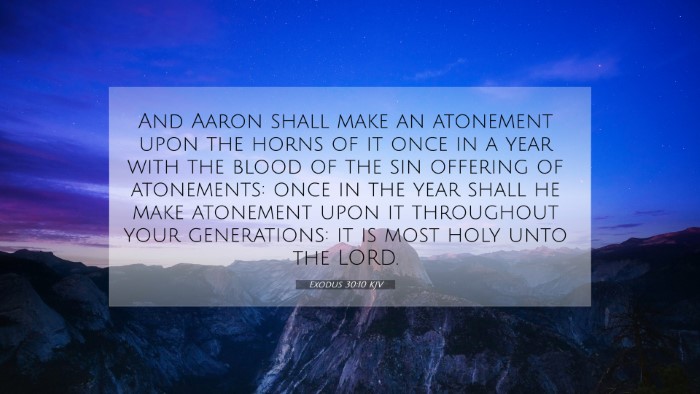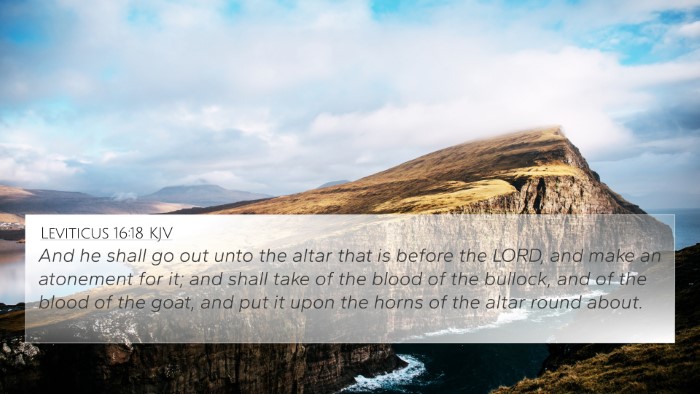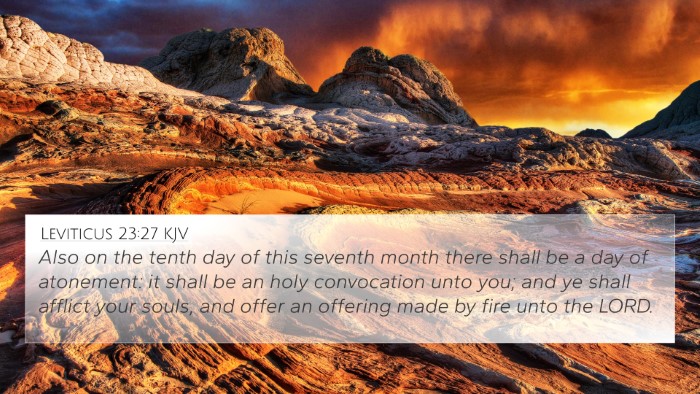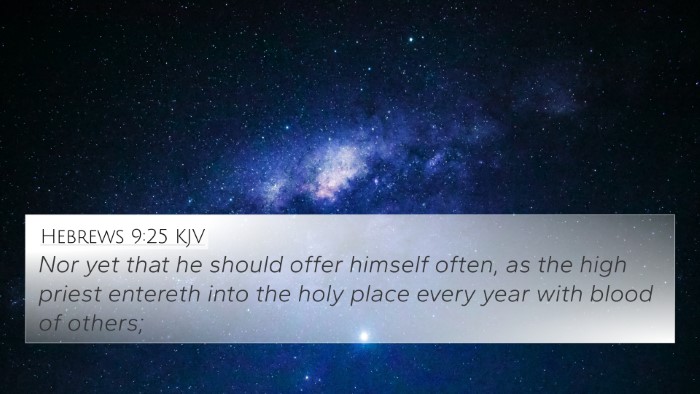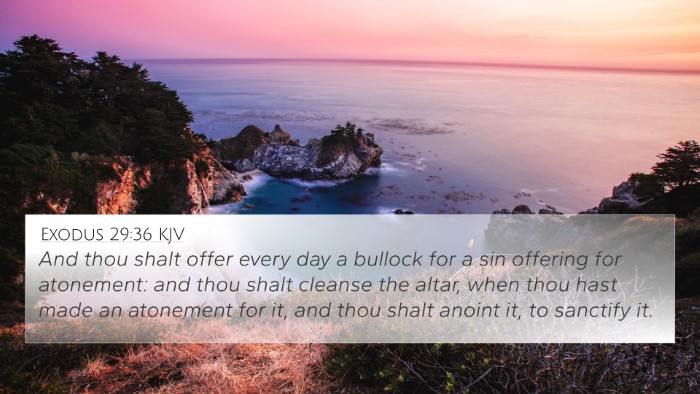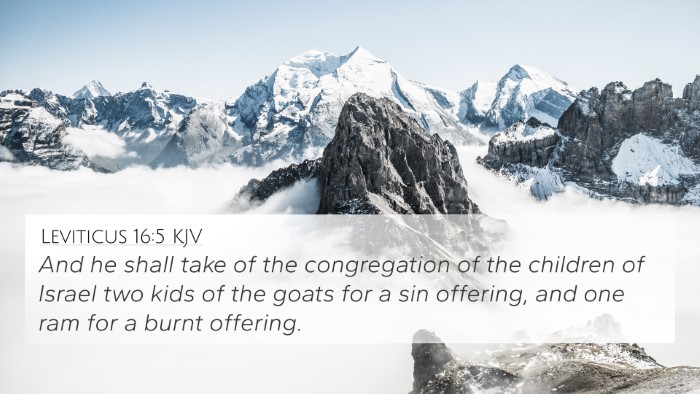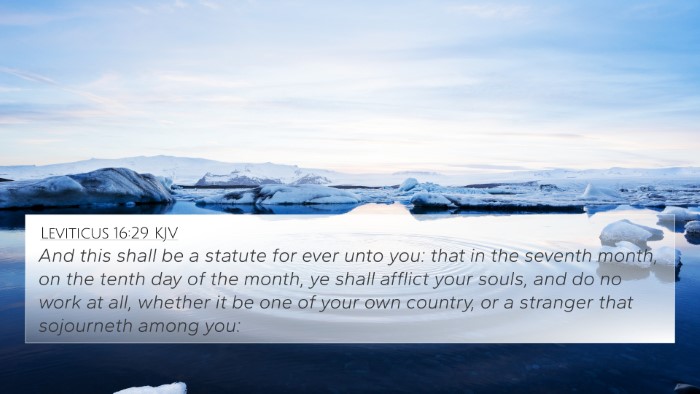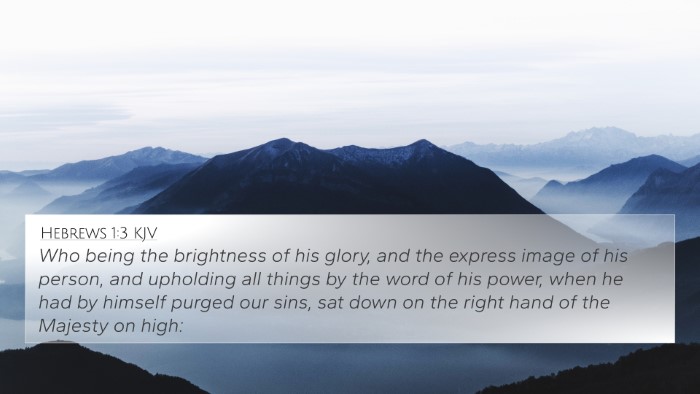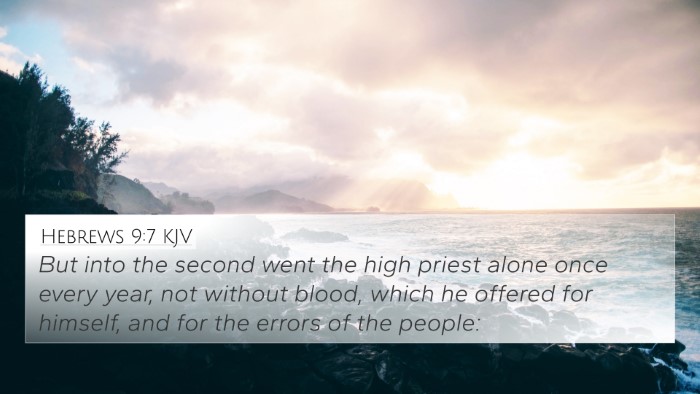Understanding Exodus 30:10
Verse: "And Aaron shall make an atonement upon the horns of it once in a year with the blood of the sin offering of atonements: once in the year shall he make atonement upon it throughout your generations: it is most holy unto the Lord." (Exodus 30:10)
Overview of Exodus 30:10
This verse describes the ceremonial act required by Aaron, the High Priest, to make atonement for the sins of the people. The focus is on the "horns" of the altar, symbolizing strength and power, and the importance of blood as a means of reconciliation between God and humanity.
Commentary Insights
Matthew Henry's Commentary
Matthew Henry emphasizes the symbolism of atonement. He suggests that the horns of the altar represent the strength of the Lord's mercy. The act of making atonement with blood signifies the necessity of sacrifice for the forgiveness of sins, foreshadowing the ultimate sacrifice of Christ. Henry reminds us that the ritual is not merely an obligation but a sacred means of maintaining a relationship with God.
Albert Barnes' Commentary
Albert Barnes focuses on the significance of the yearly atonement, indicating that it was a perpetual command. He notes that this act was a vital reminder of sin's seriousness and the need for divine forgiveness. Barnes connects this practice to the New Testament, illustrating how it points toward Christ's sacrificial death, which serves as the ultimate atonement for sin.
Adam Clarke's Commentary
Adam Clarke discusses the procedural aspect, explaining how the atonement was made once a year, highlighting God's patience and mercy in regard to sin. He also notes that the 'most holy' designation of the altar indicates the special presence of God. Clarke underscores the importance of the blood offering as essential for reconciliation with God, while also drawing parallels to the broader biblical narrative of salvation.
Bible Cross-References
Exodus 30:10 can be cross-referenced with the following Bible verses to enhance understanding:
- Leviticus 16:15-16: This passage details the Day of Atonement, aligning with the yearly atonement tradition established in Exodus 30:10.
- Hebrews 9:7: Refers to the once-a-year act of atonement by the High Priest, establishing a connection to Christ's once-for-all sacrifice.
- Romans 3:25: Discusses Christ as the propitiation for our sins, emphasizing the fulfillment of the atonement system in Christ.
- John 1:29: John the Baptist refers to Jesus as the "Lamb of God," indicating His role in atonement, similar to the sacrificial system.
- 1 John 2:2: Refers to Jesus being the atoning sacrifice for our sins, linking back to the concept in Exodus 30:10.
- Isaiah 53:5: Discusses the suffering servant who bears the iniquities, connecting the theme of atonement to prophetic literature.
- Psalm 51:7: The plea for purification with hyssop symbolizes the cleansing from sin, a key aspect of atonement practices.
Thematic Connections
The theme of atonement in Exodus 30:10 resonates across the Biblical narrative, forming a mosaic of inter-Biblical dialogue that connects the Old and New Testament views on sin, sacrifice, and reconciliation.
Tools for Bible Cross-Referencing
To further explore the connections in Scripture, consider utilizing the following resources:
- Bible Concordance: A helpful tool for finding specific terms and their occurrences throughout Scripture.
- Bible Cross-Reference Guide: This can assist in locating related verses that expand on the themes of atonement and sacrifice.
- Cross-Reference Bible Study: A method to analyze verses that complement or contrast with Exodus 30:10, enriching the study experience.
Conclusion
Exodus 30:10 serves as a pivotal verse in understanding the sacrificial system instituted for the Israelites. Its implications extend into Christian theology, where the act of atonement is fully realized through the sacrifice of Jesus Christ. This verse, along with its cross-references, provides a comprehensive insight into the themes of sin, forgiveness, and redemption, inviting deeper study and reflection through tools like a Bible concordance and cross-reference guides.
